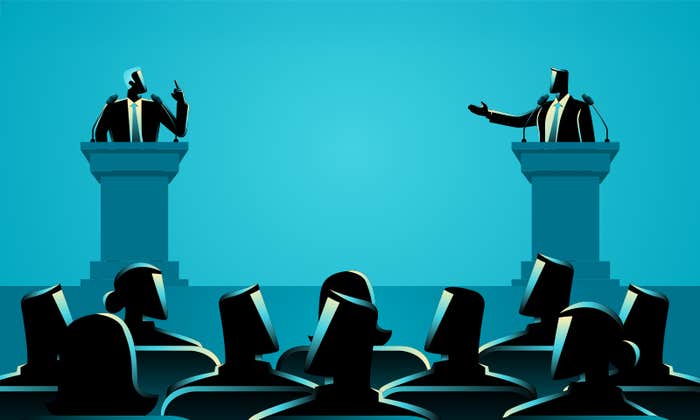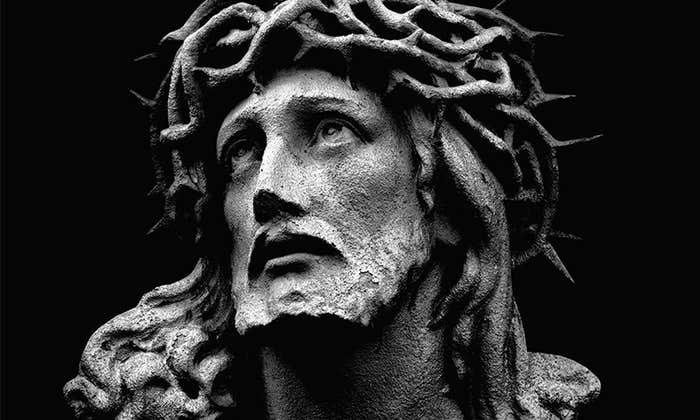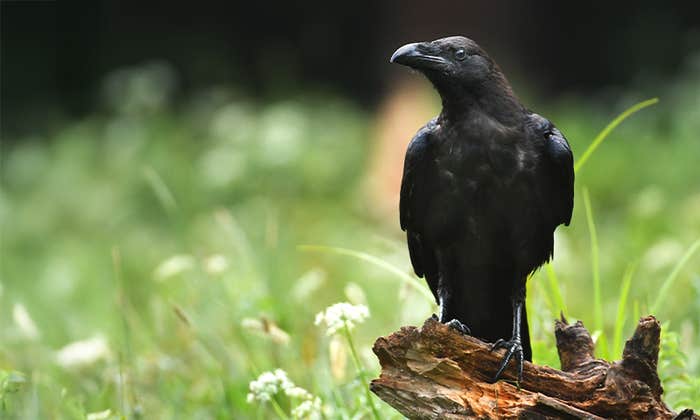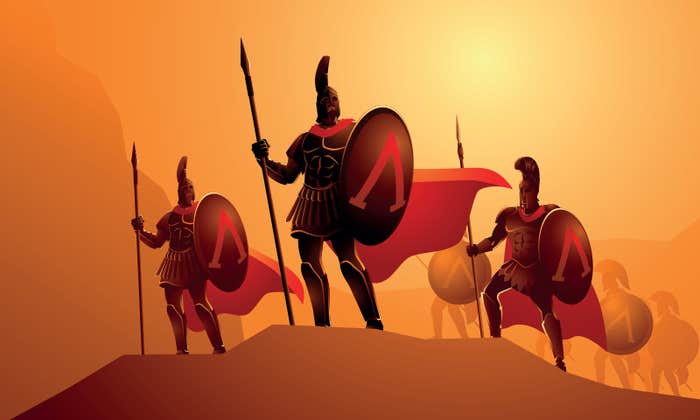David Friedman moved from Denver to the Israeli city of Safed in 1979 to live as a Haredi, or ultra Orthodox Jew. At 29, he and his wife Miriam already had four children. He enrolled at a yeshiva where he drew a salary to study Talmud. It seemed like a splendid arrangement, a path into a life of spiritual consciousness. Friedman plunged into his studies headlong, mastering difficult texts in Hebrew and Aramaic. “It was my job,” he told me. “I was pretty serious about getting there on time, spending the whole day studying like we were supposed to do, and also serious about prayer.”
But as months and then years went by, he began to feel frustrated. “Everyone around me would rush through prayers and not get into it. Where were they going? They were staying in the yeshiva the whole day, so why rush?” Prayer started to feel less like a spiritual experience. Friedman believed that the mitzvoth, the commandments in Judaism, would lead him to spiritual experiences. But those experiences weren’t happening. He felt himself becoming alienated from the people around him. Something was missing.
His spiritual struggles suddenly gained a physical dimension. Seven years after arriving, he was diagnosed with stage three non-Hodgkins Lymphoma. Friedman moved back to Denver for chemotherapy with much to consider. He had followed the strictest prescriptions of his faith to the letter. But he had not yet found God in Safed, at least not the way he’d expected. And, by letting him get cancer, God had apparently not found Friedman.
Friedman’s ideas of God changed dramatically around this time, he would tell me years later. God became an unknowable entity. “I know people who think their beliefs have been proven scientifically,” he told me. “But it’s more like shooting an arrow and then painting the bull’s eye around it. I don’t think that’s what we’re supposed to be doing. You have to learn to accept what you don’t know, what you can’t know.” The devotee has to arrive at a kind of knowledge that one medieval philosopher described as a “cloud of unknowing.”
Friedman believed that the mitzvoth would lead him to spiritual experiences. But those experiences weren’t happening.
The history of the idea of God has consisted of two equal and opposite themes: a God in man’s image (God creating man, or vice versa), and God as pure abstraction. A man-like God makes God relatable. He has personality, and sometimes even a chance to make a flesh-and-blood appearance. The abstract God, on the other hand, embodies the unreachable ideal, pure goodness, and origination. This tension is visible across religions. In Christianity, a physical son of God is balanced against ideas like the Holy Spirit. Islam prohibits representational art, even of people, because they might suggest an image of God in the worshipper’s mind. The Islamic tradition presents a paradox: man cannot know God, but also should approach God through cultivating a consciousness of the “face of God.” A hadith quotes God telling Muhammad, “I was a hidden treasure; I wanted to be known.”
The Jewish biblical tradition goes through a linear evolution between these themes. Adam, Eve, Cain, Abel, and Noah all encounter God. He comes in person to tell Abraham and Sarah that they’ll be nonagenarian parents, and then demands that Abraham offer his child, Isaac, as a sacrifice. But by the time Moses appears and witnesses the Burning Bush, God has changed in character.
“The image of the Burning Bush captures that God is material and non-material at the same time,” Harvard University history professor Peter Gordon told me. “Then it evolves so that by the time you get to the prophetic books there’s a pronounced emphasis on God’s abstraction, and then by the medieval period God’s incorporeal nature solidifies into a dogma.” Alan Mittleman, professor of modern Jewish thought at New York’s Jewish Theological Seminary, the leading institution of Conservative Judaism said, “The classic text is Exodus 33. Moses asks to know God’s ways. Moses says, ‘If I have found favor in your eyes, let me see your substance, your being,’ and God says ‘no man can see my face and live. So I’ll show you my goodness and it will all pass before you.’”
The duality of the concrete and the abstract God naturally set up a difficult boundary. The faithful needed some kind of definition—a dotted line around a set of characteristics, no matter how broad. But the development of an uncertain God made even this a challenge. “There’s always a kind of struggle to sustain the idea of a pure God as Other,” Gordon notes. “It’s inherently unstable. The minute you begin to think about it, and imagine the relation between the divine Other and humanity, you compromise it. Some other relation bridges the relation between us and the unknown God.”
In Judaism, one of those bridges was the development of Kabbalah.
Along with Jerusalem, Tiberias, and Hebron, Safed is one of the four holy cities in Judaism. Set in stone atop Mount Canaan, the clear air, shimmering blue skies, and hills that ripple like waves into the horizon remind you of the Rockies. Jewish mystics associate Safed with the primordial element of air (Jerusalem, Tiberias, and Hebron are earth, water, and fire). When the weather turns, mist envelops the mountain and surrounding forest like a shawl, a phenomenon that must surely have encouraged the mystics who have made Safed famous—though they preferred the nighttime, when they would study and gaze at the profusion of stars and ponder eternity.
The old part of Safed is a warren of stone passages connecting houses of worship and religious institutes, homes, shops, galleries, and studios. The city has been destroyed by earthquakes, rebuilt, and grown well beyond its medieval boundaries. The use of similar materials on newer structures gives them an ancient look almost as soon as they’re finished. A late Mamluk postal station, one of a number of 400‑year‑old buildings still in use, is the Rimon Inn. Street lamps, ensconced on smooth stone walls, cast a pale light at sundown, like medieval torches.
Safed’s heyday was in the 1500s, following the cataclysm of the Spanish Inquisition and the subsequent expulsion of Jews from Iberia in 1492. Bringing the flourishing Jewish society in Moorish Spain to an abrupt end, the disaster convinced some Jews it was the End of Days. As ravaged communities dispersed from Spain, many went to Palestine. At the time, Safed was a thriving textile center about 13 miles north of the Sea of Galilee, and Jerusalem was a backwater.

Prosperous and free, Safed also held the graves of the great rabbinic figures of the second century. Medieval Jews saw this as a reflection of their own situation—they had flourished under Roman rule until it ended catastrophically in exile and dispersion. Drawn to Safed by these practical circumstances, and the connection to their past, the gathering of Jews in Safed in the 1500s gave it the greatest concentration of rabbis and scholars since Roman times. It was in this climate that the Jewish mystical tradition of Kabbalah took root. Stretching back to 12th century Spain and France, and to other forms of mysticism further back still, Kabbalah concerns itself with the relationship between an infinite God (or Ein Sof, which means no end) and a finite universe.
As with any mystical tradition, defining exactly what Kabbalists believe is a tricky business. Matthias Riedl, an intellectual historian who serves as director of the Center for Religious Studies at Central European University in Budapest, describes it this way: “The mystical theologians say the divine is something that can only be understood in paradoxes. The basic idea is that God is beyond any knowledge that can be conceived in any analogy to visible things or the sensual world. But they would never say therefore we cannot have any knowledge of God at all. Instead, you need a different type of knowledge, a non-linguistic knowledge.”
After his cancer diagnosis, Friedman left Safed for eight months of intensive chemotherapy in Denver. A friend gave him books on meditation and visualization. There had been a time when he was so sure of what he knew, he wouldn’t have bothered. One book was by a Jewish rabbi and philosopher, Arye Kaplan. Although he was learned in Judaism, Kaplan wrote in English, not Hebrew—a strike against it, for the typical Haredi. As Friedman began to practice the visualization techniques, he began to feel much less certain. A new space opened up. As his physical recovery progressed and he worked on meditation techniques, he read, and he found that he could deepen his concentration and contemplation. He found that ideas associated with Eastern mysticism had a long tradition in Judaism. But that also meant that other traditions were equally valid. “I realized that I’d been mistaken and judgmental and ignorant,” Friedman said. “When I read about Eastern mysticism, I saw that we say the same things, and that a lot of traditions say the same things.”
The divine is something that can only be understood in paradoxes.
The chemo caused his hair and beard to fall out, and it hadn’t grown back by the time Friedman returned to Safed. The change in his appearance belied the internal change that he was undergoing and, at first, people allowed him the space—until his hair grew back in. Once he looked familiar, they expected him to fall back into line, as if he’d been on a vacation and now it was time to get back to work. He felt their impatience and disapproval. One day he went to the mikveh, the Jewish ritual bath, and stood on the edge of the water unable to get in. Instead of the spiritual cleansing exercise it was meant to be, Friedman saw dirty water, the potential for infection when his body was still vulnerable. He got dressed and left.
He looked around and saw how his identity was tied up with people who dressed as he did, but with whom he no longer really identified. “I wanted to make a statement,” he told me. “First I tried to make it by changing my clothes. I’d worn Hassidic garbs to fit in, but now I changed that. I went from a long black suit to a short one and a different hat. A lot of people began to avoid me.”
Friedman stopped studying Talmud and began practicing Yoga. “When I first started, I learned the corpse pose where you go into deep relaxation. Until then I’d probably never experienced deep relaxation. It was very healing, and it gave me new insight into something like Shabbat: deep rest is healing and really important. And yet, the way I’d been living, it was possible to keep Shabbat to the letter of the Law and not experience that deep rest.”
From this new line of thinking, Kabbalah was a short distance away. “I came to see the dual aspect of spirituality, that God is both unknowable but we also experience God in the known,” Friedman said. He opened an art studio, painting and drawing Kabbalist shapes and patterns—his expression of faith was, in the words of Riedl, overcoming language. One painting of his, “A Tapestry of Holy Names,” features Hebrew letters arranged in rows, repeating patterns that invite the viewer to reflect on ideas connected to Gematria. This is a system of Jewish numerology that assigns each letter numerical values that in turn have spiritual associations. To Friedman, the different spellings of the same names represent the different levels of how we understand the manifestation of God. For the Kabbalist, God makes Himself known by ‘clothing’ Himself in the ten attributes of primordial man—the sefirot. The numerology is tied to stories and metaphors that are meant to help explain these attributes, another way of approaching the ineffable ideal.
In 1569, Rabbi Isaac Luria joined a Kabbalist community in Safed. By the end of his life, through oral lessons given to his students, he had changed the tradition permanently. Most modern Kabbalah reflects these lessons—the Lurianic Kabbalah. Luria was a charismatic figure who had spent years living as an ascetic, barely communicating with his own family. He also was a well-known mystical poet. He challenged his followers to dedicate themselves to revelation and self-purification through fasting, prayer, and study; they often gathered in forests and open fields for stargazing. Luria claimed to be reincarnated from Shimon Bar Yochai, the second century rabbi whom Jews believed had unearthed sacred knowledge while hiding from the Romans in a cave for 13 years. Jewish tradition credits Bar Yochai with the authorship of the foundational Kabbalist text, the Zohar, although scholarship points to Moses Ben Leon, a thirteenth century sage.
“I came to see the dual aspect of spirituality, that God is both unknowable but we also experience God in the known,” Friedman said.
Luria’s thinking built on that of earlier Kabbalists, and on Aristotle and Plato. His most radical idea was that God had withdrawn to make space for the world. Creation was the result of God contracting his divine and infinite light to create space for finite, independent spheres. The “empty space,” the vacuum, he called the tzimtzum. Creation was not a revelation; it was an act of concealment. “God had thus created a place where he was not, an empty space that he could fill by the simultaneous process of self-revelation and creation,” writes Karen Armstrong in A History of God. “It was a daring attempt to illustrate the difficult doctrine of creation out of nothing: the very first act of En Sof was a self-imposed exile from a part of himself.”
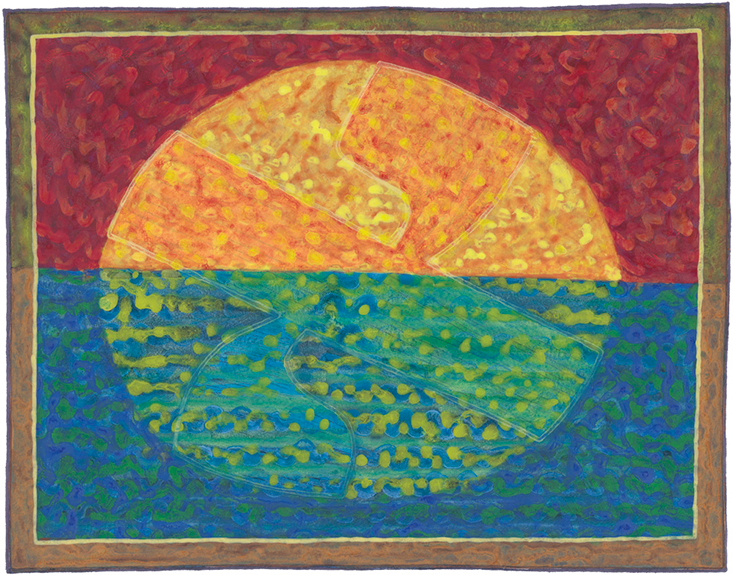
Deeply ingrained in the Kabbalist tradition, then, is the idea of a God that is inscrutable—that he has, in fact, hidden himself. And from this starting point emerges a whole system of ethics. That’s because, according to Luria, God’s withdrawal was a catastrophe. The original harmony of creation was destroyed, and the divine sparks it contained scattered into the formless waste of tohu u-bohu, or exile from the Godhead. The task fell to humanity to retrieve the sparks through devotion to God and love of fellow man, or in the language of the Kabbalists, deeds of loving kindness. The universe could be repaired, and it was up to us.
Fragments of divinity, then, were everywhere. God was in the world—and out of it, at the same time. In this way Kabbalah bridged the everyday with the unknowable. It also addressed other vexing issues. For example, how could God let evil exist? It’s because his original harmony was destroyed. In his wholeness, God was good and only goodness could exist. But evil could exist in pieces. Why did God create man? Because God depended on man to be made whole again. And so on.
“It is something integral to the Jewish tradition: the distinction between God’s being and his ways,” Mittleman told me. “The uncertainty of what God is does not, though, leave Jews directionless or confused or adrift in what they do with their lives, or how they see their lives in covenant with this unknowable God.”
Just as Kabbalah teaches that God cannot be known, so Kabbalistic art tends to be abstract and conceptual—even vaguely reminiscent of the Islamic mosaics, which take the place of representational art. “Negative theology works in a way that you speak about God in concepts that are totally inadequate,” Riedl told me. ”You think of him as a father or you think of him as a shepherd or as a lord or as a creator. You talk yourself into ever more abstract concepts until you overcome language and you only experience. There you have a knowledge that is not knowing in any common understanding of the word but is still somehow knowledge.”
I read Riedl’s analysis to Friedman.
“I agree with that,” he said. “The Hindus say ‘neti, neti,’ meaning, ‘It is neither this nor this.’”
The crypt of Bar Yochai, the purported author of the Zohar, is in a stone building with a modest white dome and blue gates in a village not far from Safed, called Meron. Lag B’Omer, the anniversary of Bar Yochai’s death, draws hundreds of thousands of visitors. Men and women daven, or pray, in two different sections of the complex, their eyes sometimes focused on an open book, sometimes closed, their prayers either personal or committed to memory. Their lips move; words spill in a firm murmur, so the place acquires a kind of rumbling hum. Many of the men genuflect, and some rub their faces on the velvet curtains that veil the marble structure over the grave itself. Beggars are everywhere, asking for change, usually successfully. The Kaballah calls for acts of loving kindness, so giving to a beggar takes on an aspect of divinity.
Fragments of divinity, then, were everywhere.
The pilgrimage reflects the deep echoes of Kaballah across Judaism. Kabbalist teachings suffuse Jewish liturgy and practice. And their spiritual heirs, the Hasidim, are a powerful presence in the Jewish community. Talking to them, I am reminded of why so often in Jewish history the rationalists have been dismissive of such scenes. The line between mysticism and magical thinking can become easily blurred. Friedman is one who sees Meron through the lens of a skeptic. “Who even knows who’s buried there?” he said. “A person’s value is in his teachings.”
I visited Friedman early this spring in Safed. He is a content 56-year-old grandfather and successful artist, and less of an outlier within his community. When I first met him about 15 years ago, he and his neighbors were in a state of hostility over his change and his rejection of their values. He observed the Sabbath and kept kosher. But his presence was a threat.
Now, though, all of that seemed to be behind them. He and his wife Miriam, who herself went through epiphanies, from a secular upbringing to ultra Orthodoxy to her husband’s viewpoint, have five children and 11 grandchildren. They get along with their neighbors, even if they don’t agree on everything. Safed is much more relaxed and tolerant than many communities in, say, Jerusalem. Friedman’s gallery is successful, and his art is shown in international galleries.
He reflected on his own journey. “You get sick and you wonder why it happened. You can’t know. As humans, we can only know a certain piece. Kabbalah means ‘accepting,’ and one of the things it challenges us to do is to accept that there is a curtain between God’s knowing and our not knowing,” Friedman said. It sounds simple. But “simplicity,” Friedman says, “is hard, not easy.”
Todd Pitock, a writer in Philadelphia, has reported stories across the Middle East.

























